Textile artists have long been inspired by nature, but there’s something unique about the levels to which Julia van den Bosch infuses that inspiration into her work. Julia seeks both visceral and emotional responses through stitched relief work that translates the psychological benefits that come from time spent in nature. She strives to communicate the peace, wonder and euphoria nature brings to the psyche, even when viewers aren’t with her on her walks in the countryside.
In this article, you’ll discover Julia’s purposeful, and indeed meditative, approach to capturing nature’s essence and healing powers in her work. You’ll also learn specific techniques she relies upon to help her achieve those goals.
Julia’s works are held in both public and private collections in Europe and the USA. She has also exhibited in galleries across the UK and as part of continuing group shows in the Mall Galleries, Hoxton art gallery and Kingston Museum. In addition to undertaking private commissions, Julia works on site for Richmond on Thames parks department as an ongoing ‘artist in residence.’ Julia has also recently been accepted as a member of The Society for Embroidered Work.
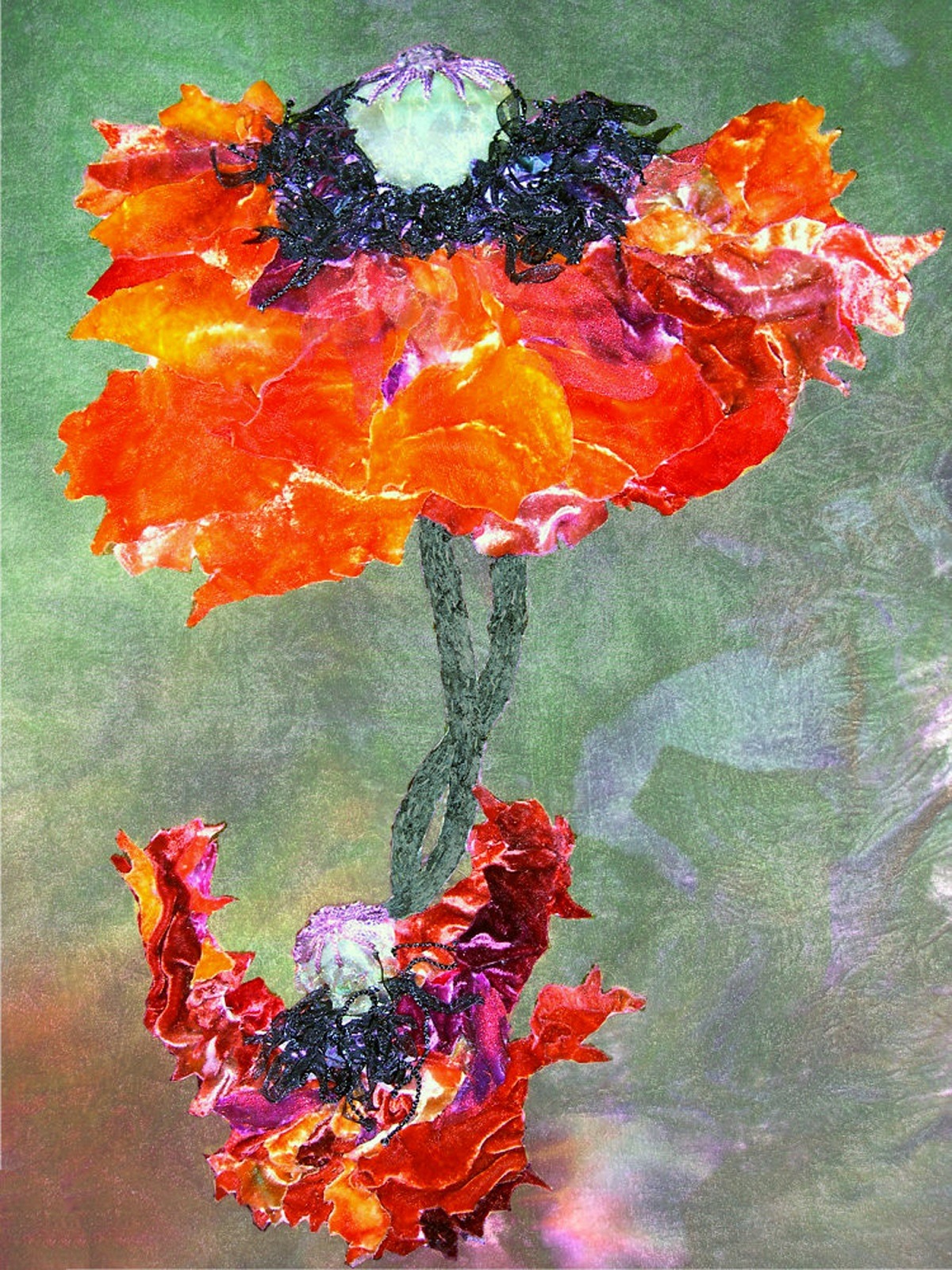
Surrounded by textiles
TextileArtist.org: What initially attracted you to textiles as a medium? How was your imagination captured?
Julia van den Bosch: I trained in fine art trying different mediums and different techniques. But I never felt they produced the end result I wished for.
Fortunately, I had a brilliant tutor who upon visiting my home, looked around and said ‘your home is full of colour, patterns and textures, so why don’t you try working in textiles?’
Everything immediately fell into place. I had been surrounding myself with textiles I had gathered from across the world and was attracted by their richness and diversity. But I never truly analysed what the attraction was. It was then I realized that textiles as an art form offered all the things I had been trying to capture in fine art and that the two art forms could, in fact, successfully merge.
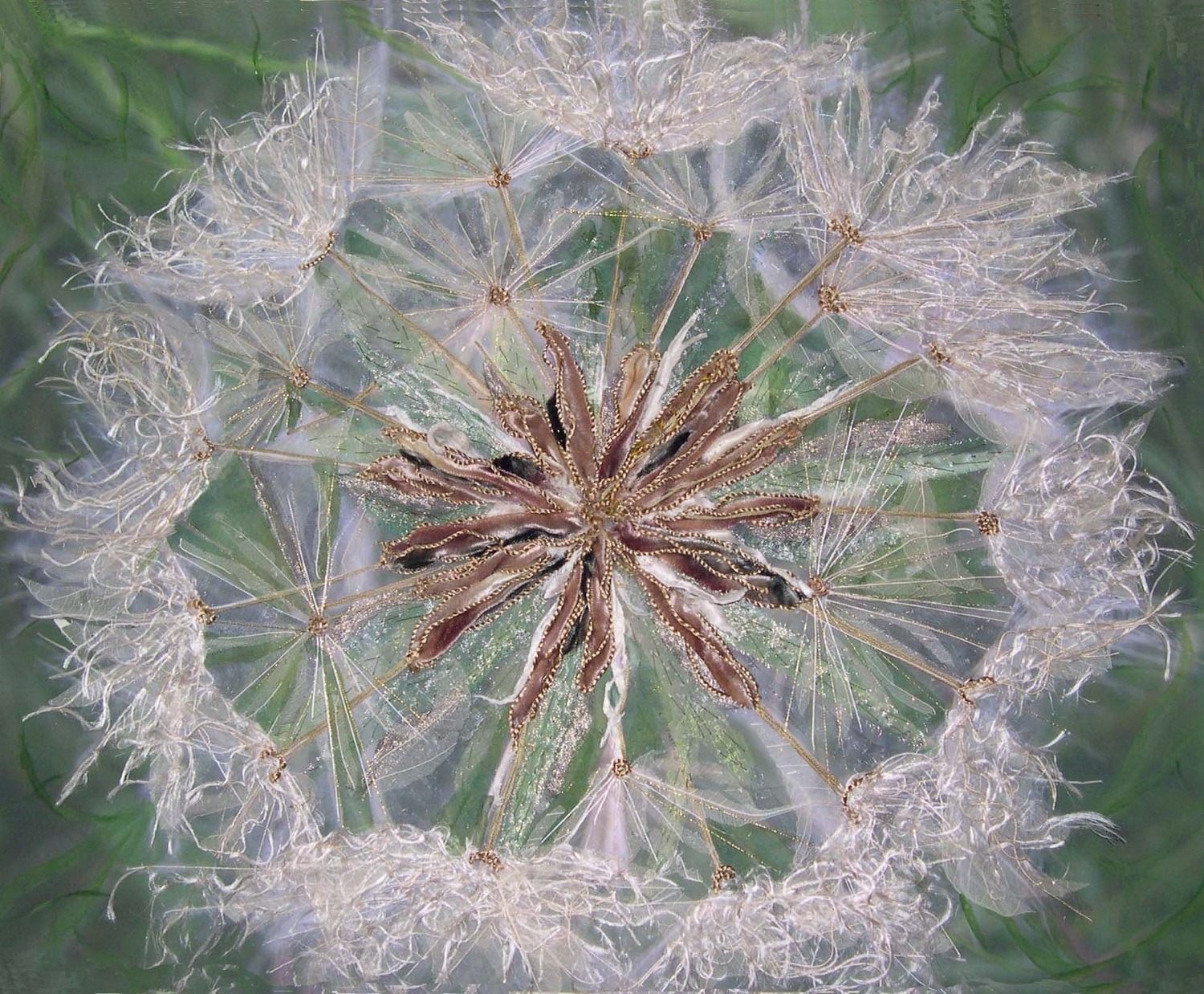
What or who were your early influences and how has your life/upbringing influenced your work?
I grew up in the Kent countryside. It was a fairly solitary existence which had the effect of making me become very connected to nature in all its aspects, as nature was my main form of entertainment and exploration.
My parents were also very keen gardeners. For example, my mother single-handedly planted 1,000 daffodil bulbs on a bank for the amazing effect they would have in springtime. This, too, enhanced my knowledge of plant life and landscape. The garden had originally been designed by Capability Brown, so I gained a huge appreciation of natural design from the roots up through living in such beautiful, creative surroundings.
My imagination was also fed by visits to dusty old antique shops. I remember one of those visits as a child when I first encountered stumpwork in a cabinet of curiosities and saw the magical three-dimensional worlds that could be created by embroidery techniques.
Old Chinese embroideries with their intricate needlework and relief work were also an instant attraction for me. So, all these very different types of influences merged together in the depths of my mind to manifest in different ways in my work.
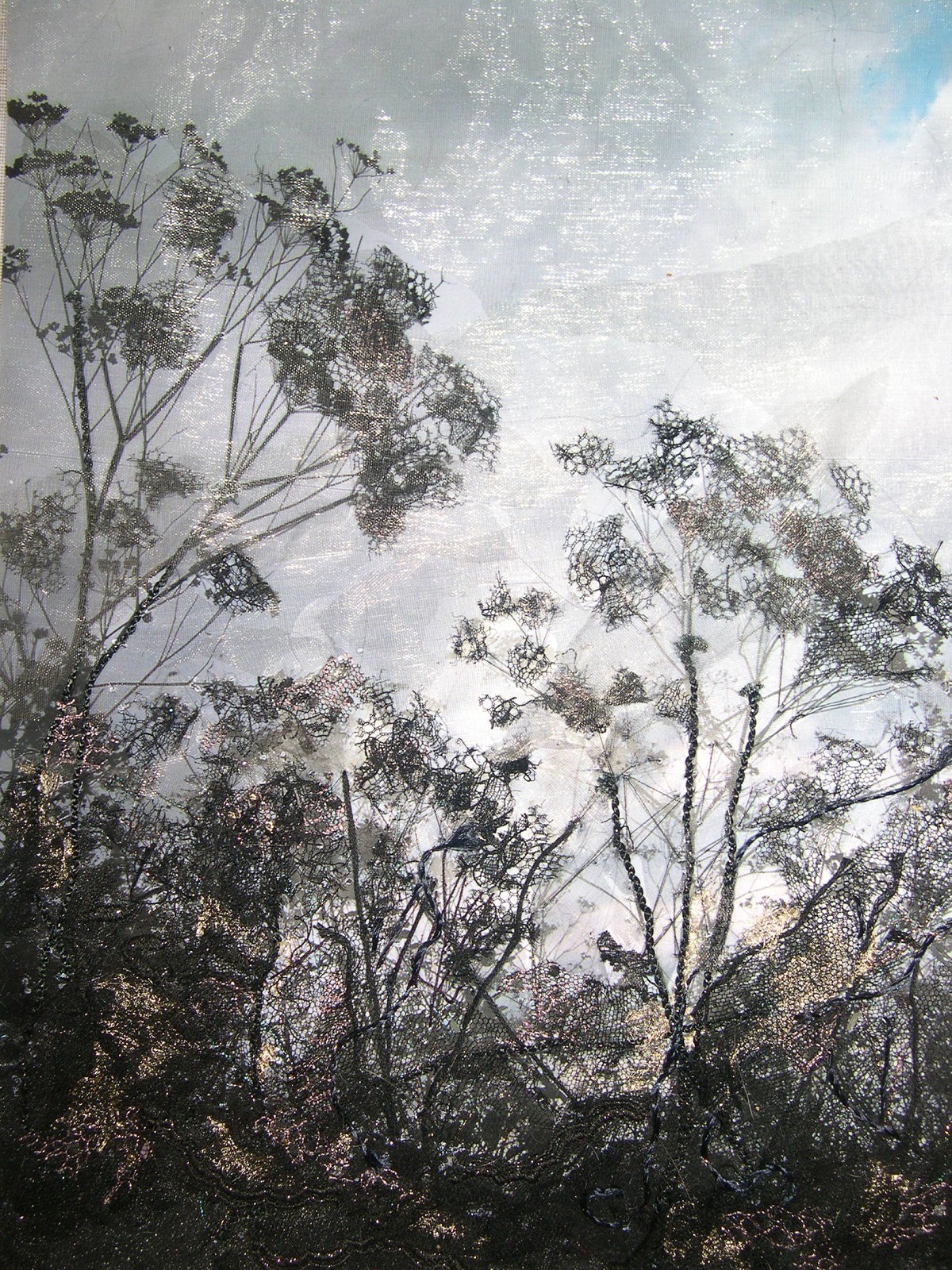
What was your route to becoming an artist?
I initially started working in collage, and that was the work I first exhibited successfully. I graduated to fine art and worked with many interesting artists as tutors.
I was then fortunate enough to meet the late and great Julia Caprara when I started working in textiles. Julia became an amazing mentor to me. She was a firm believer in minimal intervention, as she felt it was necessary to find one’s own path and way of working and one’s own ‘voice’.
Julia didn’t believe in formal training in fine needlework. She moreso pursued a ‘try it and see and learn from the end result’ approach. Julia also formed an exhibiting art group of which I was a member, and that was the start of my becoming a professional textile artist.
The two most important things I remember Julia teaching me were the importance of attention to detail and how the odd, unexpected pop of colour lent real dynamism to a piece of work.
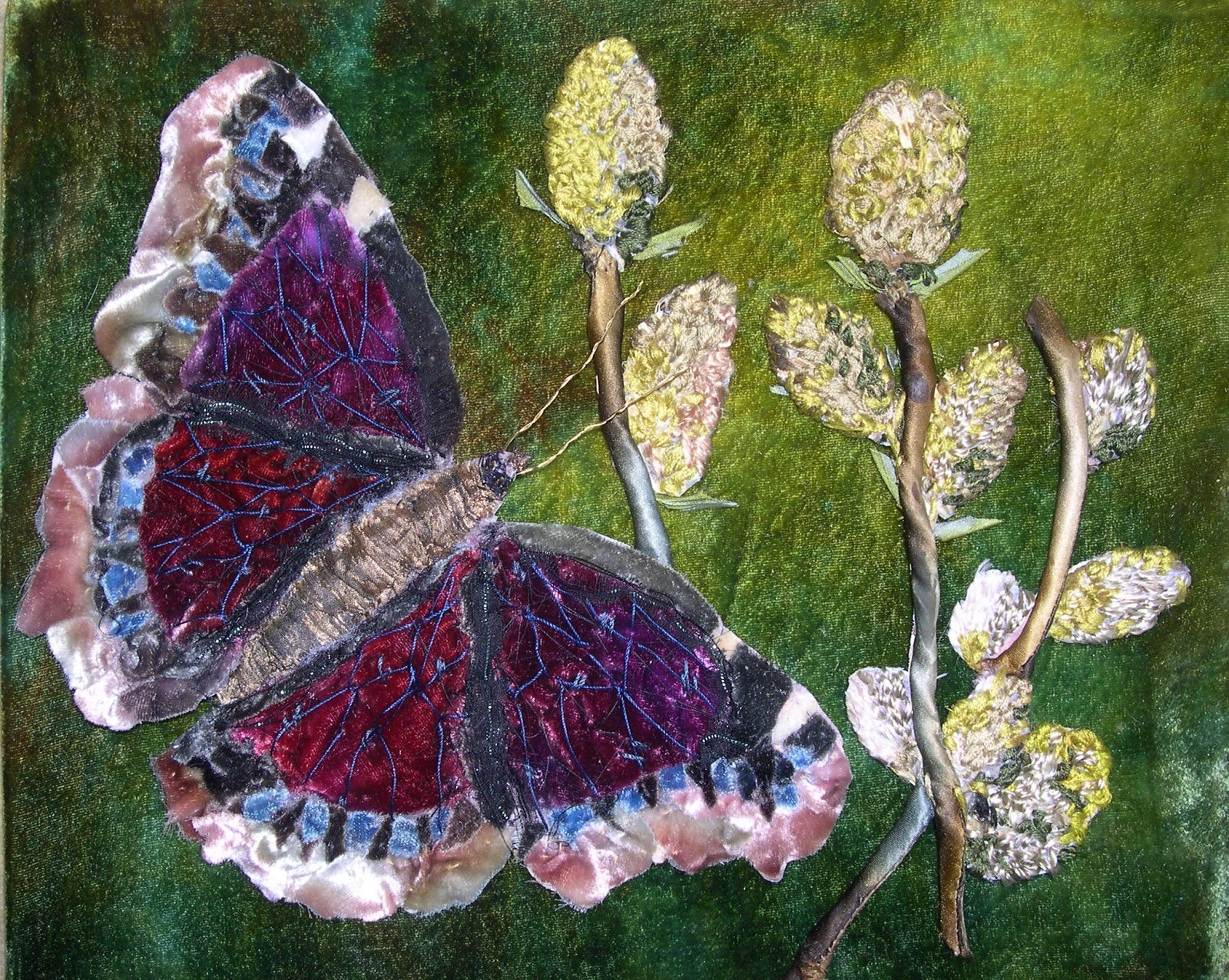
Rich sources of magic
Tell us about your process from conception to creation
The things that inspire me in my work are texture and form, pattern, the richness of colour and the sense of drama that occurs unexpectedly in nature.
I also want to make the work come ‘alive’ for whoever views it, wherever their surroundings, which is where the three-dimensional aspiration comes into play.
The very first piece of work I sold (and every artist–amateur or professional–knows how wonderful that feels!) was bought by a man who was in a wheelchair due to polio. He told me the piece of work enabled him to leave his room, enter into that created a magical world and feel free by doing so. I try to emulate that feeling if possible.
I am very drawn to the strength and deceptively simple lines of art deco, but also to the colour and detail of miniatures and enamels. The mystery, intrigue and sumptuousness of Venice and Commedia dell Arte are also inspirations for the theatre they create.
All of these things are rich sources of magic that are always in my subconscious and are triggered by either a series of ideas or an image I come across when in my garden or walking around the countryside. I will see something that captures my imagination, and then I want to make that image come alive and somehow transmit the feeling I have when seeing it. I want to try to recreate its dynamic and its heart.
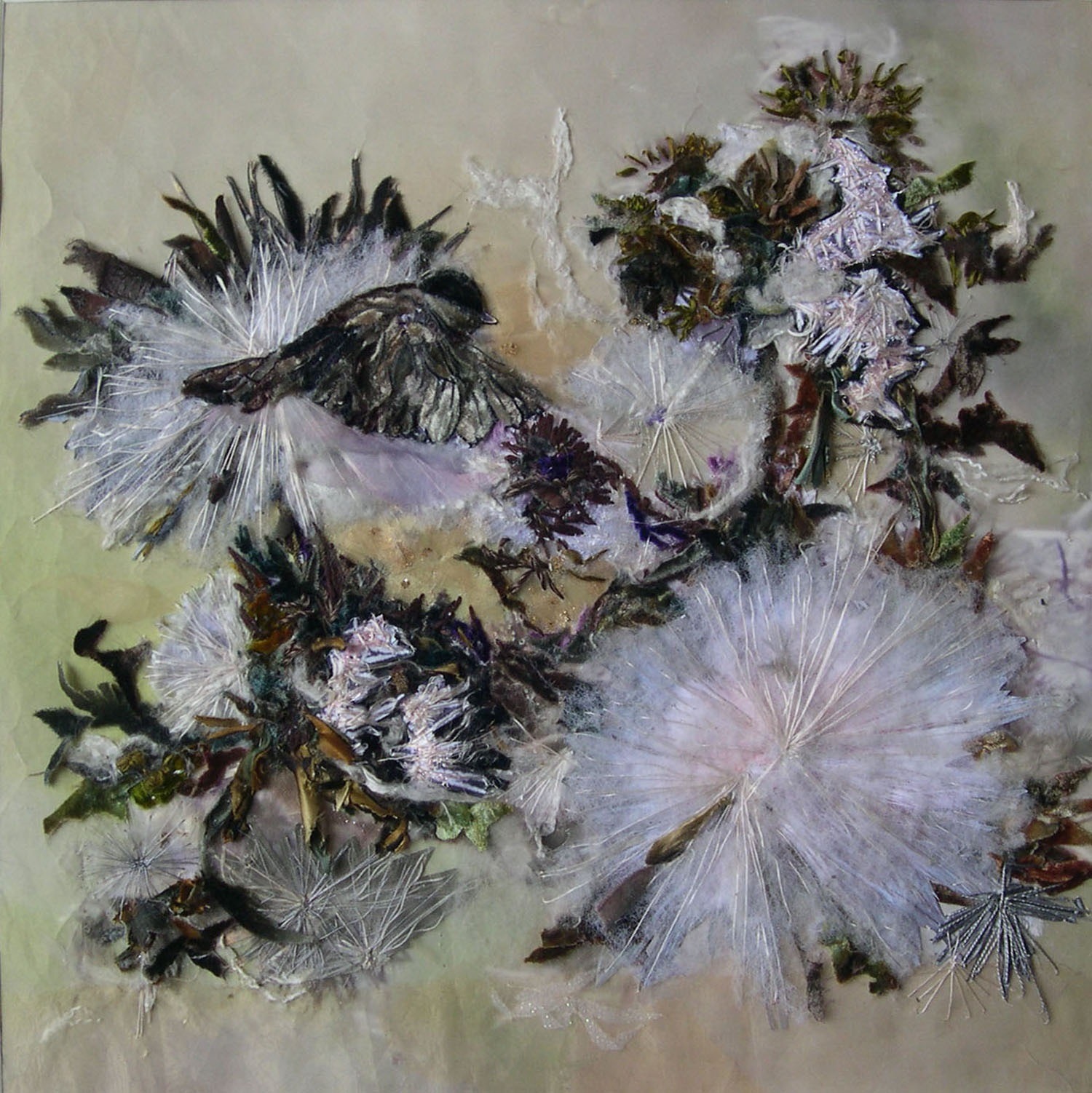
Tell us a bit about your chosen techniques and how you use them
We all know textile artists are natural magpies and collect anything and everything. This pays dividends because an unused piece of deep red velvet material will become the perfect foil to an orange An Oriental poppy petal, or a tattered old gold piece of thread will be ideal for a sycamore seed.
I use images from my photography as a guide. I also use botanical art techniques for finer details, so I am, in fact, painting with silk threads.
I choose a selected colour palette of threads and materials of different textures that are suitable for the work, and I make sure my studio has a big enough selection to really engage my imagination and senses.
Then the work takes over, and I work intuitively because the work itself shows me what texture or colour is needed next. I use watercolours, hand embroidery and appliqué.
When the work is finished, I check negative spaces as well as positive to ensure the final balance. I find photography also helps me in this, so I have come full circle.
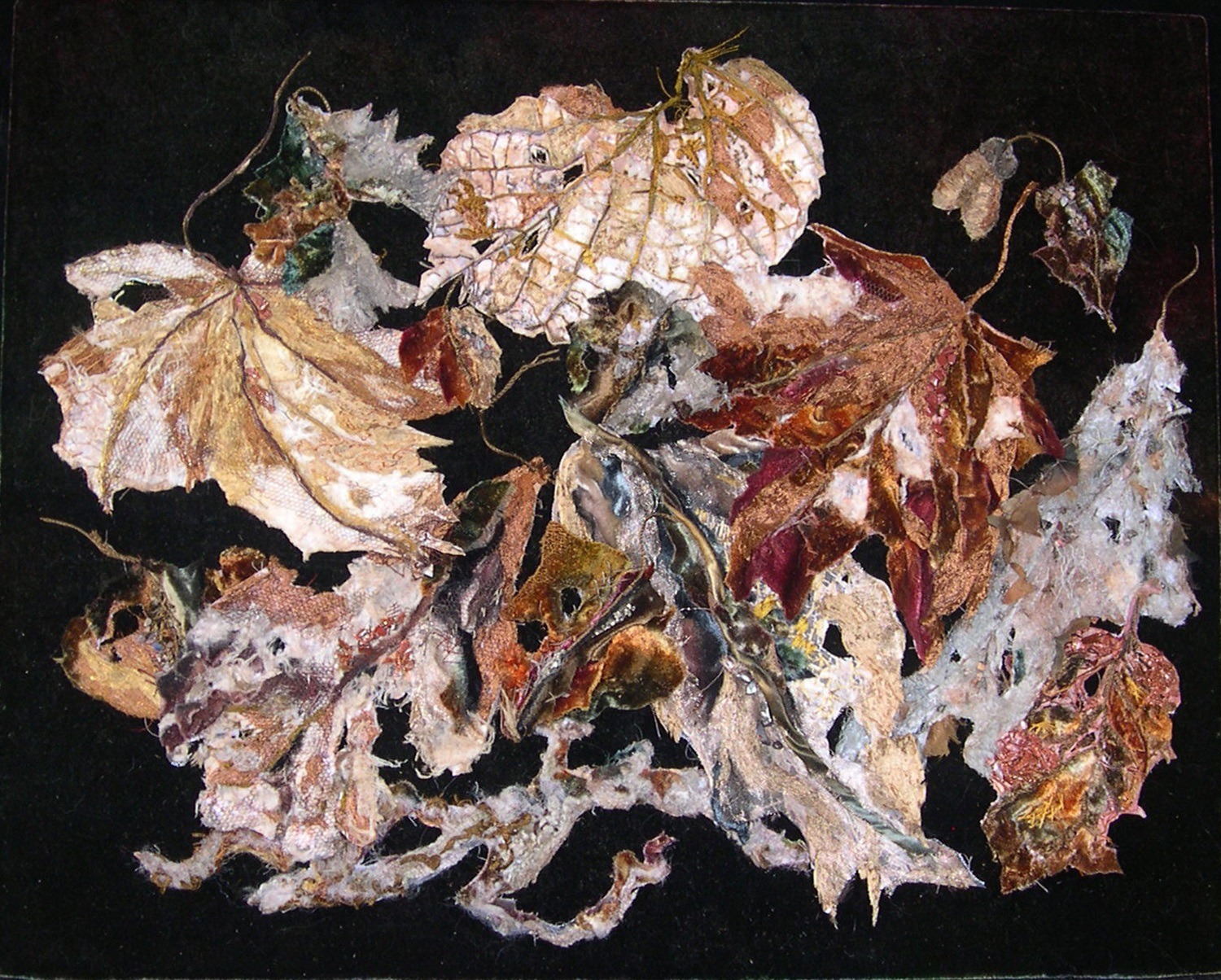
What currently inspires you?
More people are becoming aware of the healing power of nature to the psyche (depression, dementia, and mental problems of many kinds), as well as an aid to general wellbeing. It is an aspiration to try to transmit that healing dynamic in my textile work.
I undertake shamanic meditation which recognises medicine work can transmit itself through the arts: works created by hand with intention, whatever the form of art. Part of Shamanic practice is working with the energies of crystals, and I am inserting minute pieces of selected crystals whose healing properties are appropriate to their subject matter into pieces of work to see if they can give extra energy to the work.
At the moment I am working on embroideries on the breakdown of objects, fragile structures and all the fascinating growths and forms that occur in the process. So it will be interesting to see!
Integral to my love of textile art lies my love of design, and so I have also become involved in designing gardens and community landscaping. This has led to my being commissioned to give ideas and designs to act as recognition aids for dementia sufferers. It’s been very interesting and thought-provoking work.
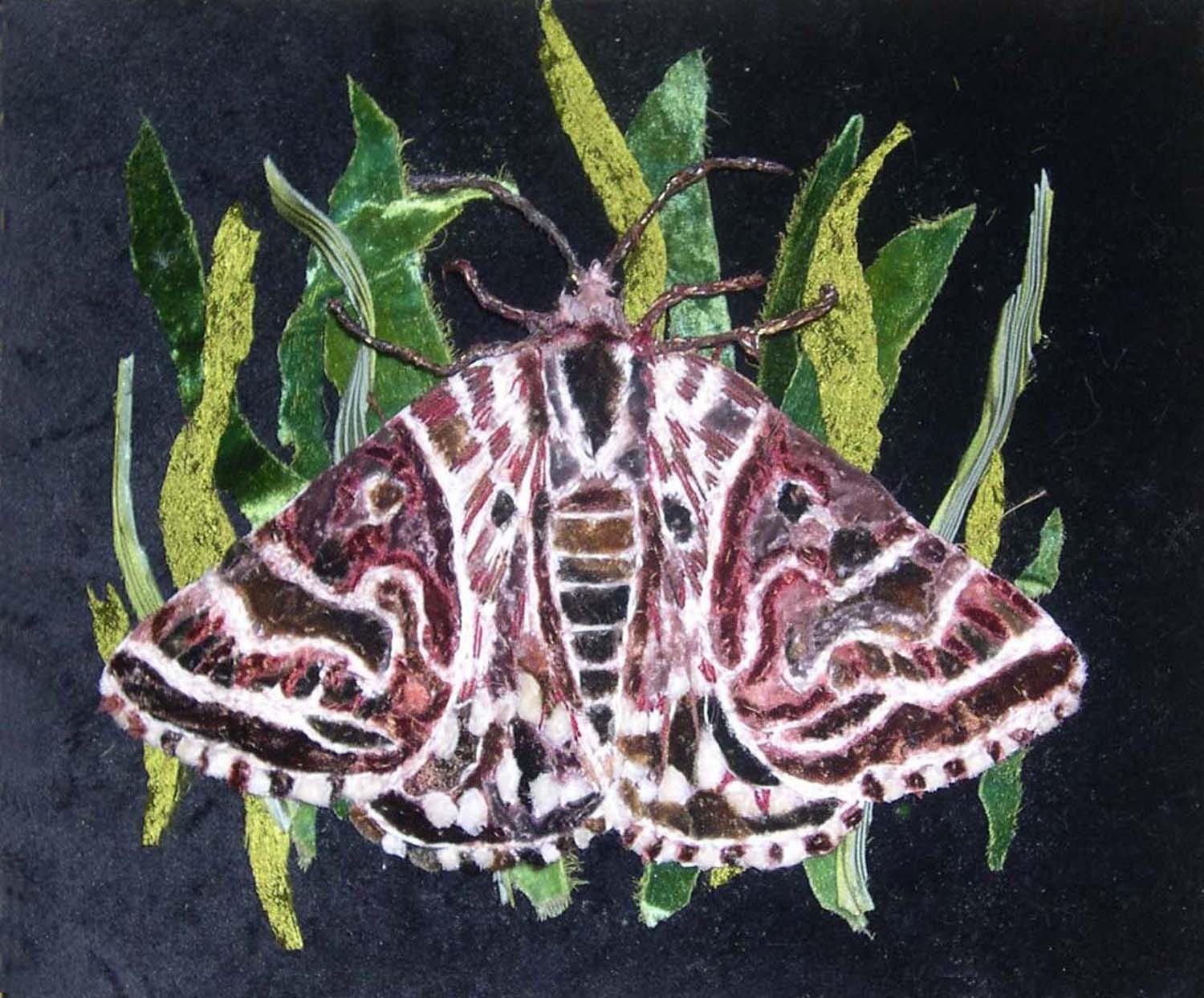
Finding a balance
Tell us about a piece of your work that holds particularly fond memories and why?
I created a piece of work entitled Grasslands. The inspiration for this was walking across Ham Lands in Richmond and suddenly discovering a whole collection of the most beautiful noonflowers which seemed to have sprung up overnight. They were set amongst grasses and were the most amazing structures. Noonflowers are also called Goatsbeard, but I think Noonflowers sounds much nicer. The flowers (which are tiny compared to the seedhead) close at midday, which is the sort of magic I love!
I spent the entire morning photographing them before they disappeared as they are so transitory. I was then commissioned to make a work from these photographs to be presented to Sir David Attenborough on the occasion of his 88th birthday which was a great honour for me.
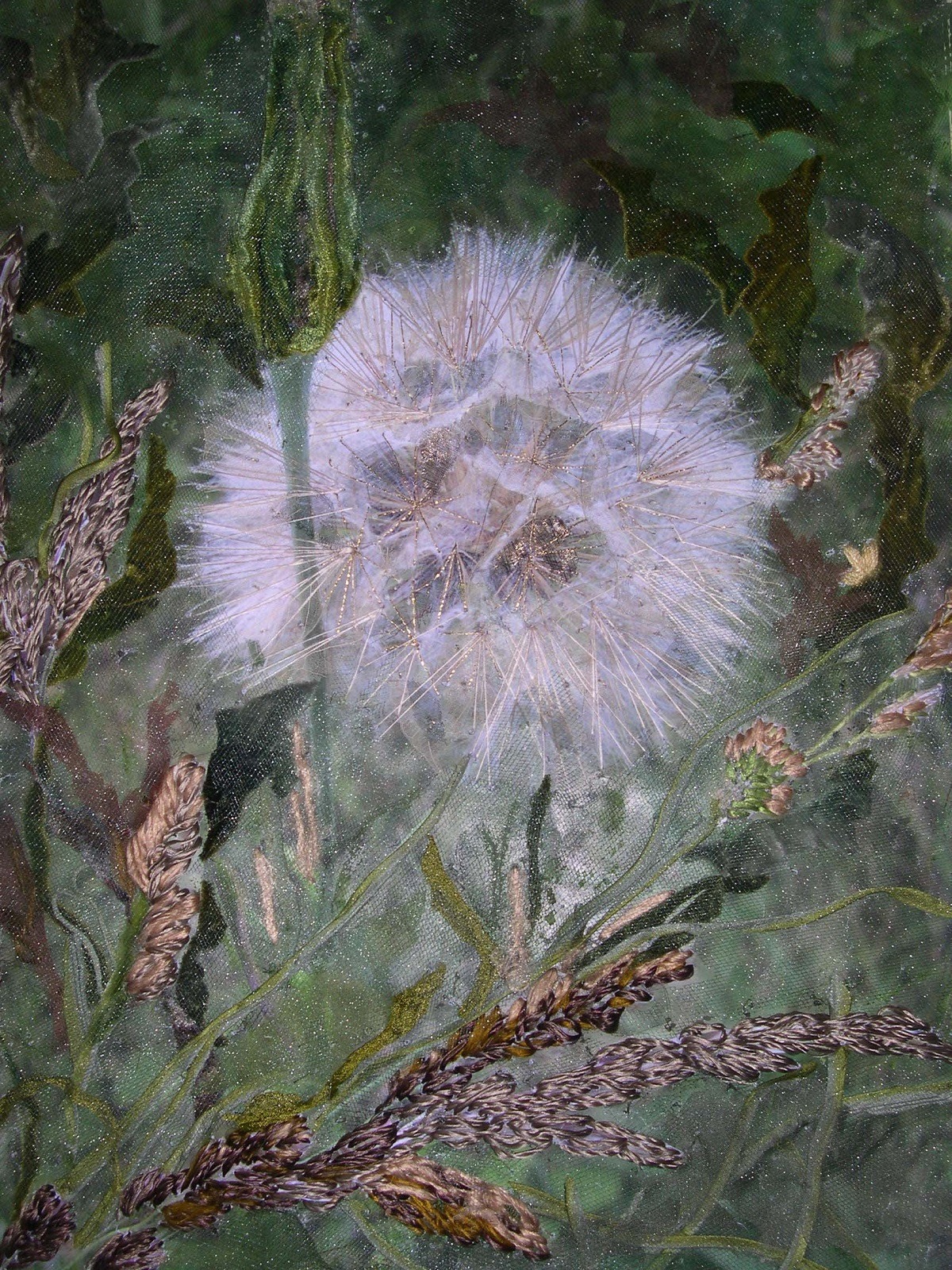
How has your work developed since you began and how do you see it evolving in the future?
My first textile works were much more painterly than now. After a great deal of experimentation to find the correct paints, I used painting with hand embroidery, and the work involved more storytelling from my imagination than from nature.
Then as I learnt what textile art could offer and all its different effects and results, I became more involved in the actual form and detail of an image. I also found that photography as a base produced a cleaner, clearer image, and so the painted element became secondary to the printed.
Now my work is very much a balance of photography, watercolour painting, hand embroidery and appliqué and is much more textural and form related.
As for evolving, there is so much more to explore: unexpected architectural structures, the richness and details of design, unusual colour combinations and textures. All are still waiting to be discovered.
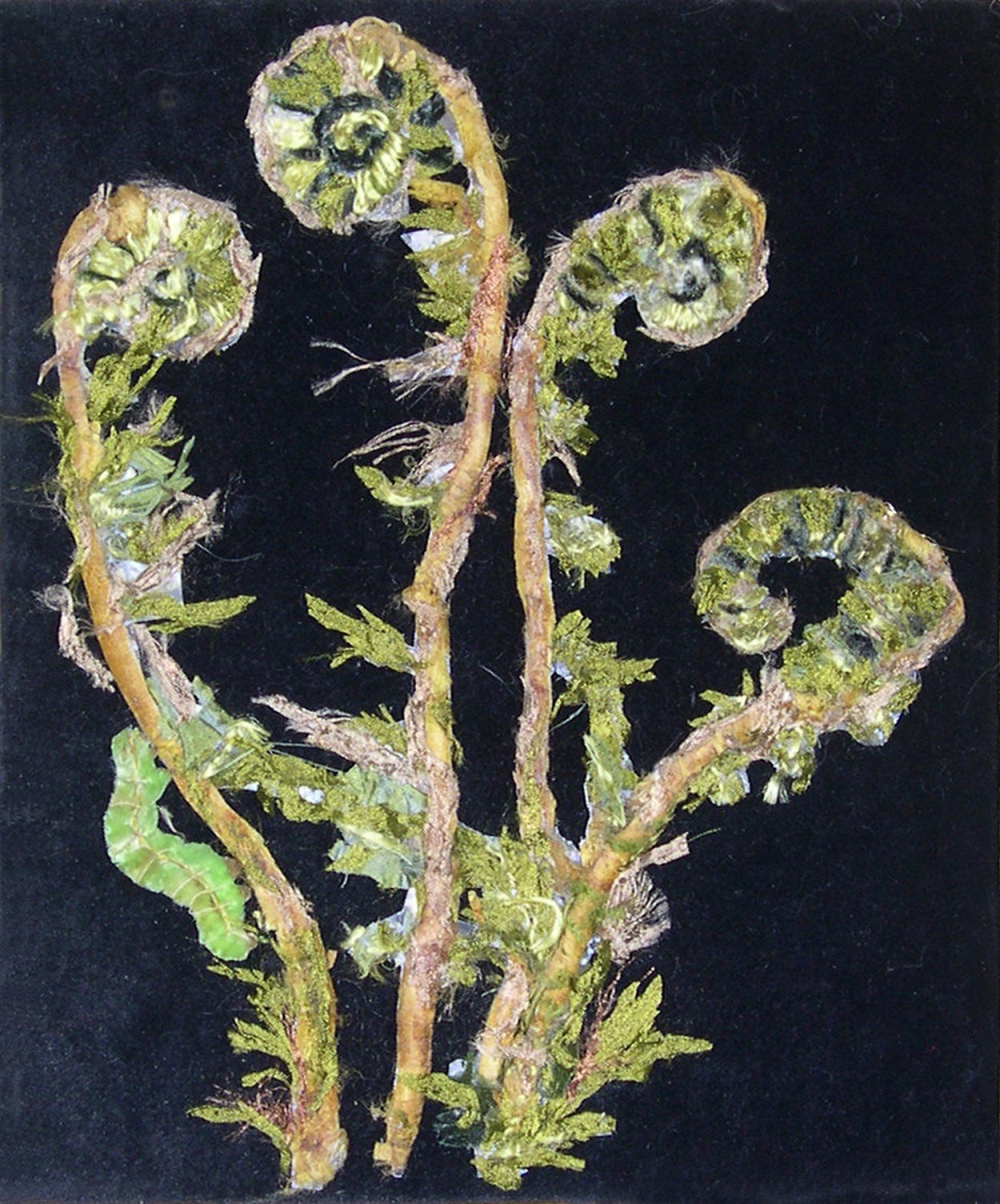
What advice would you give to an aspiring textile artist?
Try and find your own unique style and don’t be discouraged by difficulties.
Go on a journey of discovery and keep trying different ways of working until you find something you really enjoy. Have a good selection of materials/threads to choose from and get to know the different textures and effects. Try doing a collage from scraps and see what transpires.
These are all different ways to get your imagination engaged.
Then at the end of it all, you may still hit the equivalent of writers’ block, but don’t give up. If you find a way through the difficulties, you can discover something new by doing so, and all the knowledge gained will help you find your way to what feels right for you.
Sometimes a word will trigger an idea, sometimes an image, sometimes just the material itself. Let your subconscious work and then think outside the box and break the rules in the process.
Just be in love with textiles and all that they offer. They are an exciting and magical medium.
For more information visit juliavandenbosch.com
Julia encourages readers to ‘just be in love with textiles.’ How might this suggestion relate to your artistic journey? Let us know below
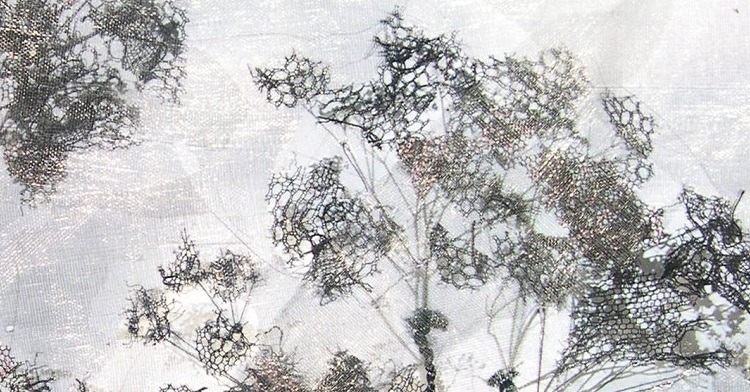

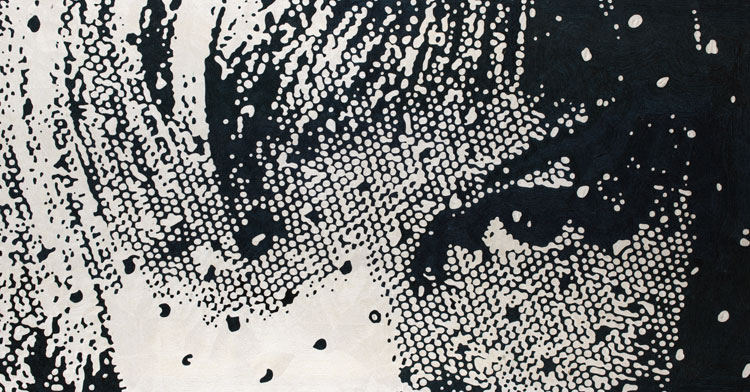
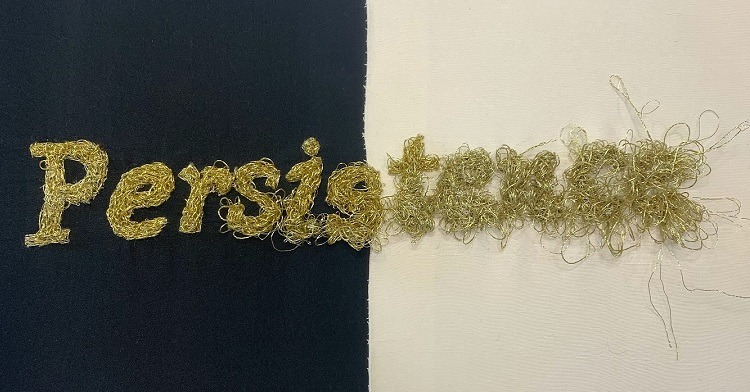
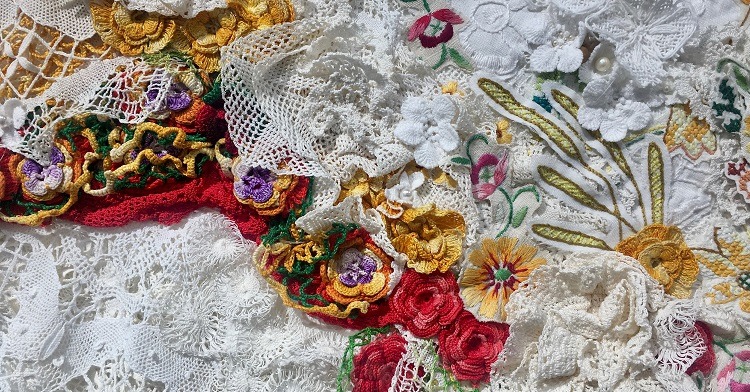
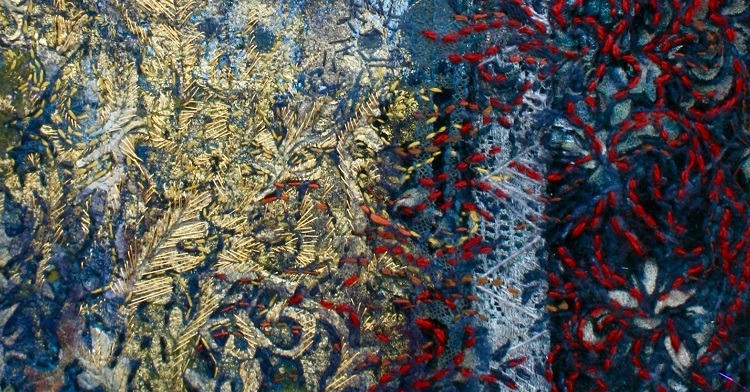
![Contemporary textile artist Lisa Solomon|Lisa Solomon - Sanjusangendo crowns [gold] - detail](https://www.textileartist.org/wp-content/uploads/Lisa1.jpg)
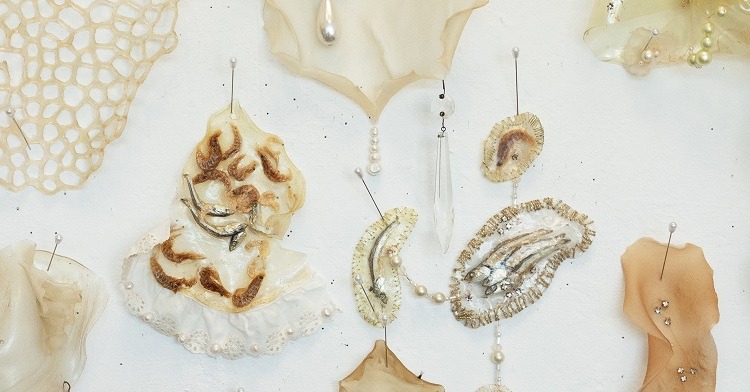
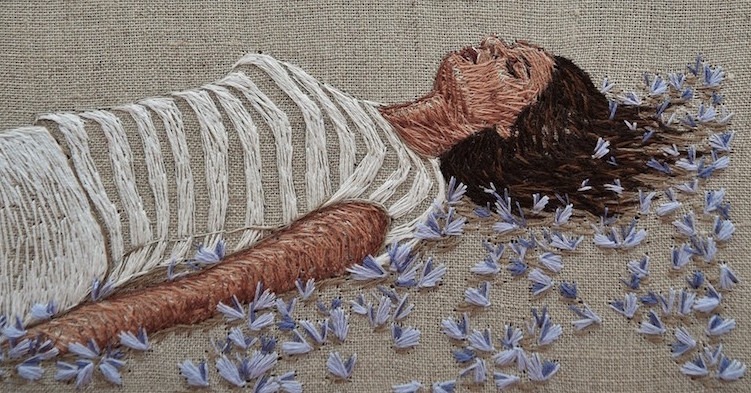
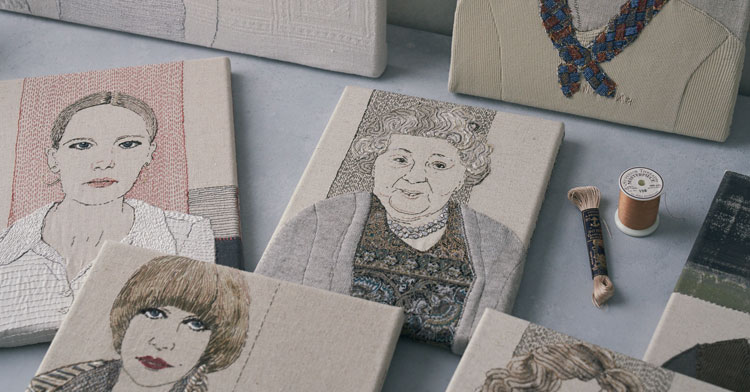
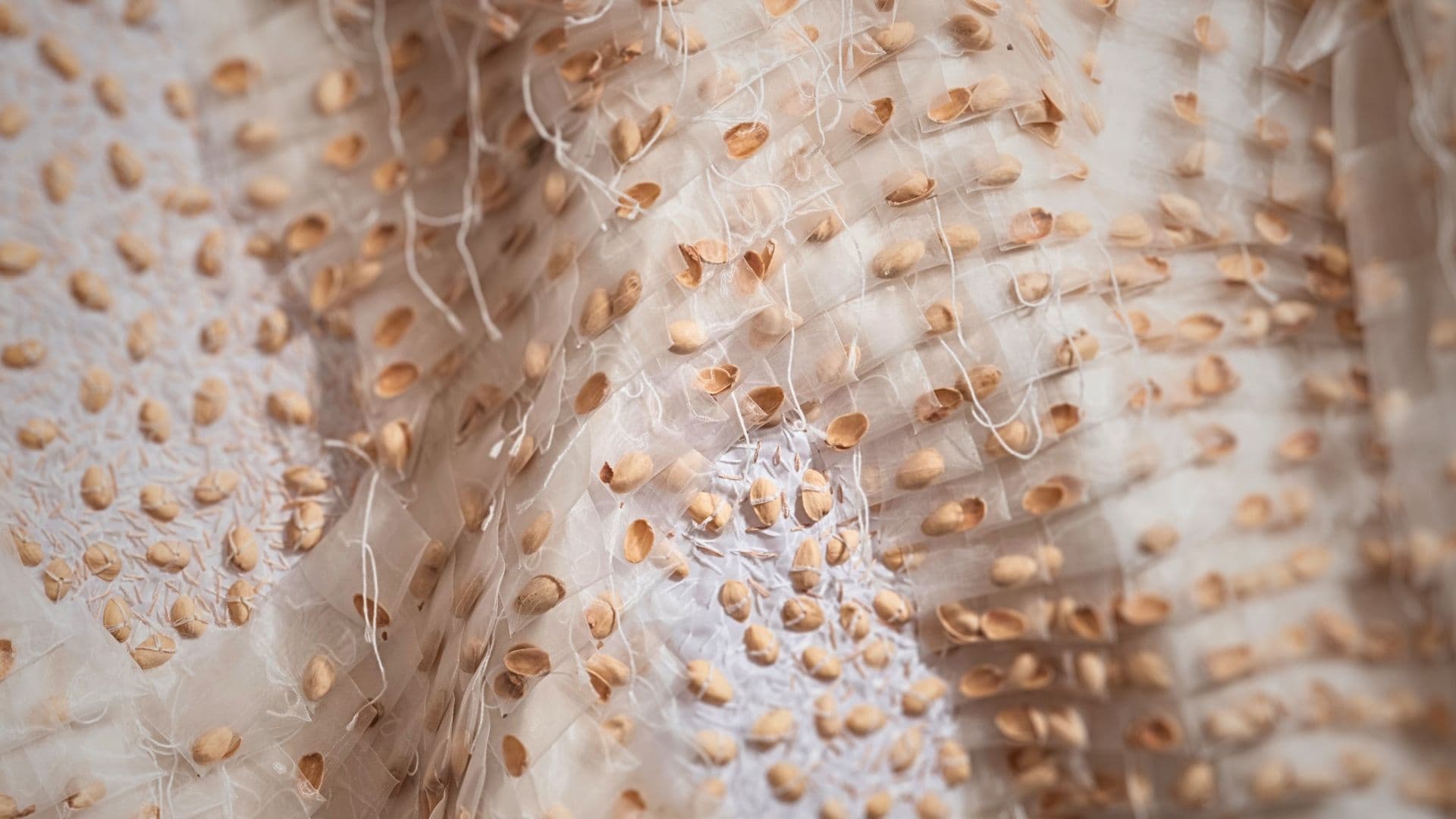
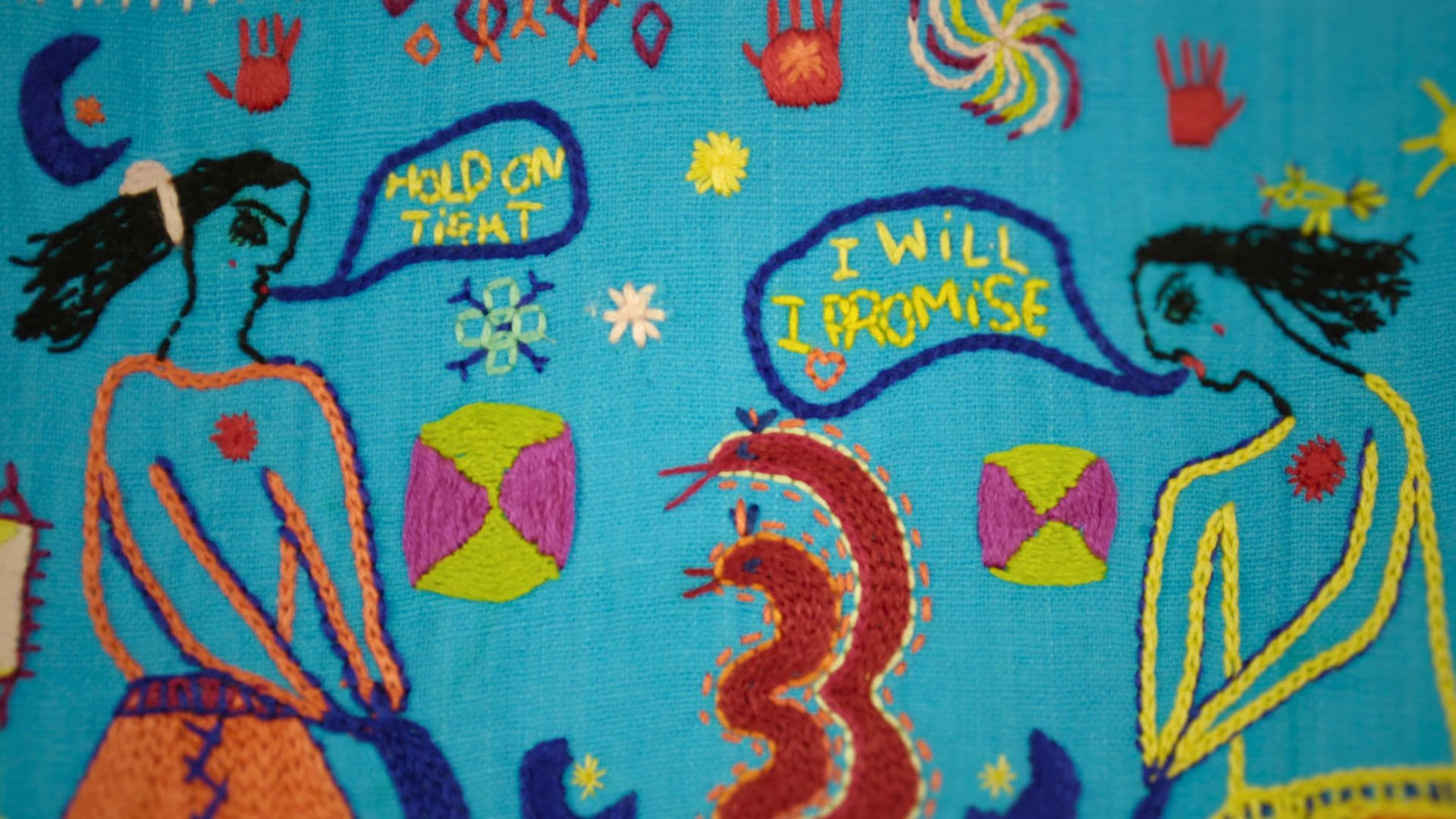
Comments